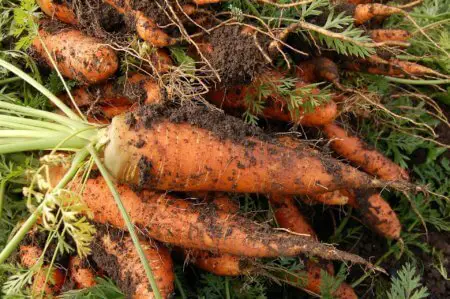Not all of us have access to yards where we can grow vegetables and other food. The good thing is you don’t need to have access to a garden to grow some of the most popular vegetables.
Follow these steps to grow carrots indoors:
- Fill the pot with soil.
- Moisten the soil with water.
- Sprinkle the carrot seeds over the soil.
- When the seedlings begin to sprout, trim them so they are not to close (1/2″ spacing).
- When your carrots are 3″ tall, trim them again leaving about 1″.
Learning how to grow carrots indoors is relatively easy.
Carrots can be quite nutritious, making them one of the best vegetables to grow and eat in that regard. What’s more, they are more varied than you might realize at first, meaning that you have quite a bit of variety from which to choose when deciding what type of carrots you want to plant or eat. In addition to all of that, carrots are quite hardy vegetables, making them that much easier to plant and able to survive harsh conditions.
Then again, one way to have them “survive” the heat and frost of extreme conditions is to bypass weather’s ravages altogether and learn how to grow your carrots indoors.
Here are a few tips and tricks to help you do just that.
Indoor Carrot Growing 101
First, for the uninitiated, when growing veggies indoors, you always want to make sure to have a few things on hand, including:
- Pots big enough for the plants to grow
- High-quality soil
- An area where your plants can have access to sunlight, or else bright artificial lighting which can help plants photosynthesize in the absence of sun exposure
- Tools with which to prune your plant and remove any diseased leaves or branches
You’ll also want to be sure to regularly rotate your plants so as to ensure that the different sides of the pot get equal exposure to the sun or indoor light sources.

Planting Your Carrots
If you’ve ever dealt with carrot seeds before, you know that they’re tiny and can get lost all too easily. That’s why you’ll want to handle your carrot seeds with care before placing them into the pot.
You can read this article to get more ideas about planting in containers.
Because these carrot seeds are so tiny, it can be incredibly difficult to try to space them out evenly when planting them in the potting soil, so don’t worry about it. You will, however, want to make note of that fact and be aware that you may need to deal with carrots being too close or too far apart from one another on occasion.
Get the soil nice and moist, plant the seeds, and you’re ready to move on.
Thinning Seedlings
As stated, because the carrots can sometimes be planted or otherwise grow too closely together, you’ll need to find a way to combat that. One of the most common ways of doing this is by thinning out the seedlings themselves once they start to pop up.
Doing this early on, difficult as it may be to thin your seedlings so early in the process, can help ensure that their roots and leaves have enough room to grow without tangling together and causing further problems.
Feeding Your Seedlings
Once you have planted your carrots and let them germinate for a few days or weeks, and after you have thinned them out if necessary, it will be time to start switching over from simply sun and water to “feeding” your carrots as well.
You want them to grow as large and healthy as possible, which means making sure that their soil is as nutrient-rich as possible. You’ll want to make use of liquid fertilizers and other growth enhancers.
That said, you aren’t going to want to just haphazardly dump that fertilizer in and hope that it spurs growth. Rather, you are going to want to add it in carefully measured amounts at carefully considered intervals.
The latter should be roughly the same each time. What’s more, you’ll want to be sure that the fertilizer you are using is safe to use and works well with carrots. Using full-strength fertilizers every couple of weeks should be more than enough to spur a great deal of growth.
Harvesting the Carrots
Now, it’s time to wait and watch for a while. Your carrots will continue to grow and develop, changing colors as they do.
You will thus want to wait until they begin to reach the type of mature orange colors we know and recognize as being “proper” carrots before you consider harvesting them. You will also want to keep an eye out for any signs of discoloration or problems with the carrots in general.
You’ll also want to be patient and let your carrots grow out as much as possible. Tempting as it may be to start harvesting them as soon as they start to mature, waiting can see them grow even bigger, thus enabling you to yield even more for your efforts.
As always, you want to harvest carrots by pulling them straight out while disrupting the soil and other carrots as little as possible.
Carrots are a fantastic foodstuff, and a delight to grow. With the right soil, water, light, and a little patience, you’ll be able to grow fantastic carrots indoors and enjoy all their carroty goodness from the comfort of your home or garden.

